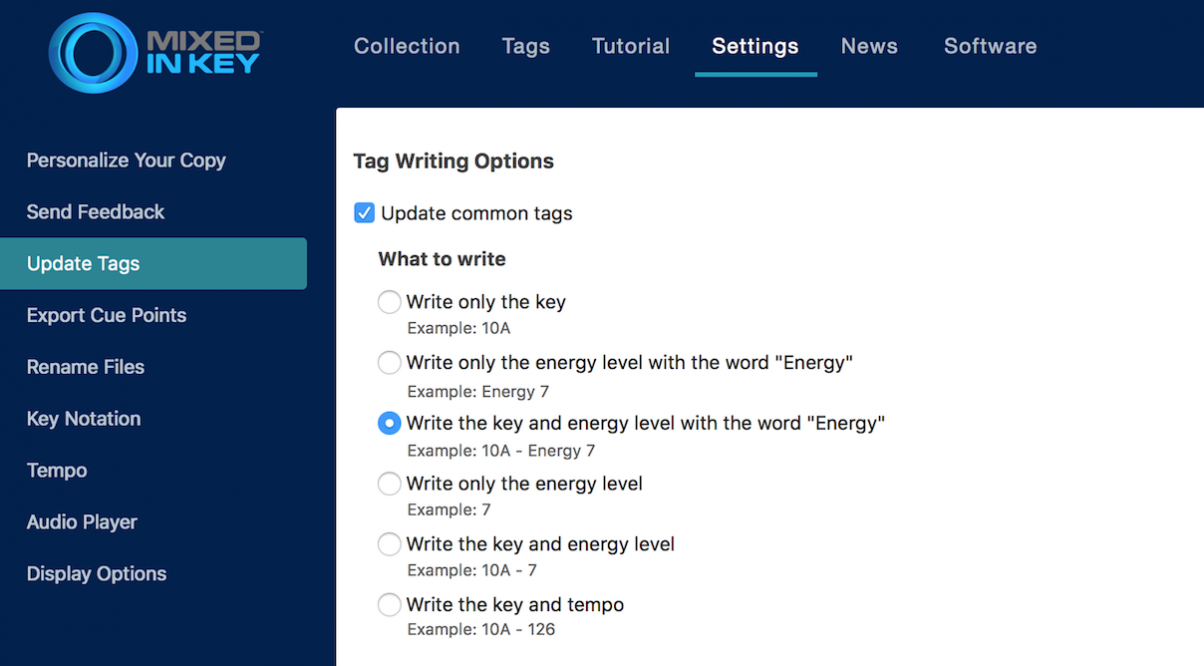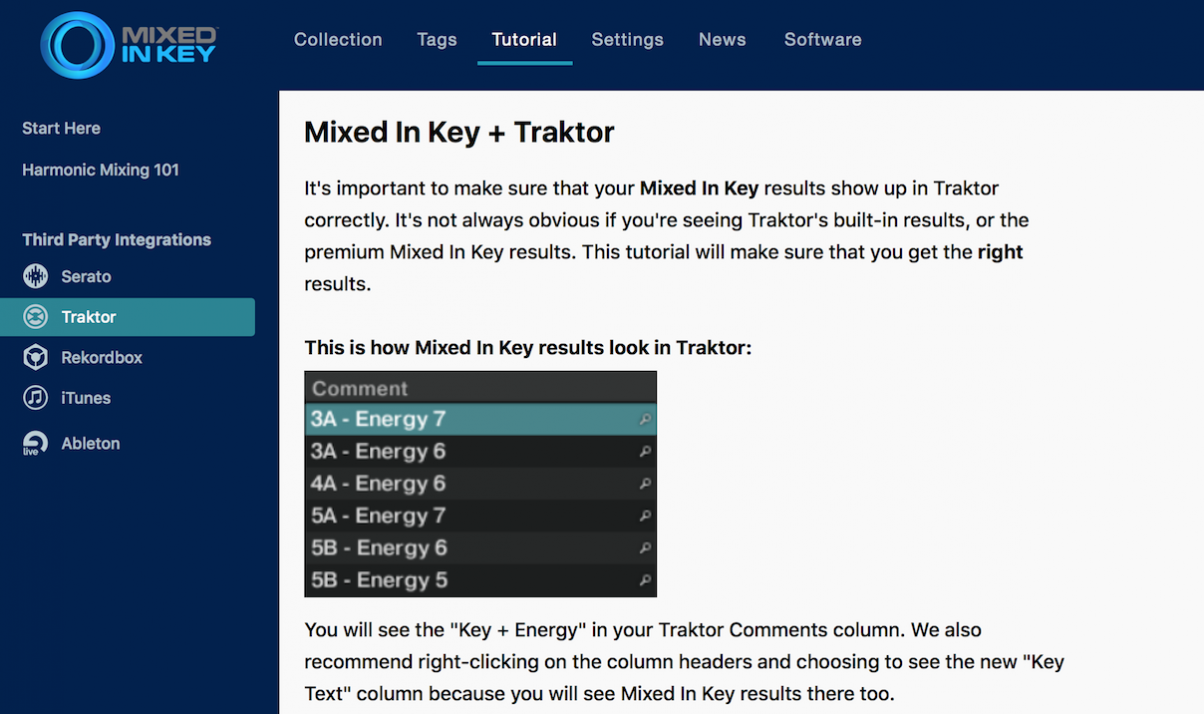The Lowdown
This is the Swiss Army knife of DJ preparation software, with world-leading key detection and a host of other features, including tag editor, editable auto cue points and energy level analysis. Maybe not the essential program it once was, but definitely worth having.
Video Review
First Impressions / Setting up
A decade ago, when key detection was almost unheard of, Mixed In Key revolutionised the game. Not only did this PC/Mac app analyse DJs’ music to work out what musical key it was in and put that info right in their DJ software, but it also gave DJs a simple way to instantly know what was likely to mix with what. But with key detection now built in to all major software, does Mixed In Key 8 do enough to make it worth buying?
Well, Mixed in Key certainly hasn’t stood still since the last version, and this version has one big advantage for everyone who owns Mixed in Key 7: It’s a free upgrade.
For your money (it’s US$29 for owners of Mixed in Key 6 and earlier, US$58 for new users) you get an app that still, primarily, is there to analyse key; something it does to the highest accuracy rate in the business, including being able to show you when songs change key mid-flow (something no built-in key detection feature in DJ software can do).
In Use

For a while now, Mixed In Key has also given you an “energy level” for each song, to help you determine its “dancefloor friendliness”. And as of the last version, Mixed In Key also introduced auto cue points: you could have it add cue points where it felt they ought to be to your tracks, and they’d show in your DJ software.
This is one of the big areas that the latest version improves on. It’s all well and good having auto cue points, but not if they aren’t now user-editable in the software that dropped them, right? Well, now they are. What’s more, you can view and edit your cues from Serato and Traktor, too.
Mixed In Key 8 also includes something the developers are calling “X-ray Vision”, which is basically a whole-track waveform view that separates beats from melodies, meaning it is in theory easy to spot where cue points should be dropped (incidentally, it’ll drop up to eight automatically for you in places like the first beat, the start of the verse and so on).
Taking the idea a stage further, a new “Cue Curve” feature attempts to show likely places where cue points should be dropped via a system of “peaks”: The top of a peak indicates where the software feels a cue ought to be (seem min pic). You can now edit where the auto cue points are dropped, and even import them from Serato and Traktor (alas, there’s no import/export of cue points from Rekordbox DJ).

Another big improvement here – and a timely one seeing that Apple seems determined to make iTunes bit-by-bit completely unsuitable for DJ library management – is a “bulk” tag editor. It’s basically Mixed In Key’s own MetaBliss ID3 editor built right in to the app, and it means you can clean up your files, folders and playlists, editing artists, track titles, comments and all other info, including for multiple tracks, just as easily as in iTunes.
You can’t change your track filenames according to metadata though, which is a shame, as you can add key and tempo info to track file names, so why not add more flexibility into this feature now there’s an integral tag editor, too?
Underneath all the additions, though, the basic workflow is the same as it every was: Import your tracks, tell Mixed in Key 8 what to do with the info it gleans from them (ie where to “write” that info to; the best place will depend on the DJ software you’re using, and there are clear guides in the built-in documentation to help you understand and decide), and… set it going. After a few seconds on each track, there’s your key, energy and cue info, all added and correct, and it’ll be present and correct next time you launch your DJ software.
The huge flexibility as to where this info is written, the accuracy of it, and the advanced features (there’s a piano keyboard for checking key analysis, for instance – where else will you find that?) are all still present and correct, with the new features simply welcome additions to how the app works.

Conclusion
It certainly feels like a big leap from Mixed in Key 7, which didn’t really make a huge amount of ground on Mixed in Key 6, and may have left users wanting to see bigger improvements seeing its release came just after a whole raft of releases from DJ software makers adding key detection of their own.
I liked being able to make playlists in the new tag editor and export them, file and all, and I think this will fit many DJs’ workflows, as will being able to export track lists as Excel files. Why not add smart playlists too?
Also – just as a thought – further integration with Mixed In Key’s automatic remastering program, Platinum Notes, could be added in a future version. Many DJs get a new file, clean up its tags including renaming it, run it through Platinum Notes to balance levels and sonic coloration, then into Mixed in Key – it’d be great if this could all be somehow simplified into one process in the same app.

After all, the developers have obviously felt the need to add value to the core purpose of Mixed in Key by incorporating half-decent tag editing, so adding more value by incorporating Platinum Notes and better tag editor / library options could really make it a no-brainer for DJs who’d otherwise possibly be tempted to stick with the more basic key analysis in their DJ software.
Mixed in Key would then in effect become all of these things, making it a sort of uber-iTunes replacement for DJs, something that’d be especially successful if Mixed In Key’s makers could get the DJ software manufacturers to recognise its own XML output in the same way they recognise that of iTunes currently.
However, right here, right now, if you’re serious about key detection and have ever wished that the detection built in to your DJ software could do more, you need this program. If you’re interested in automating or streamlining parts of your track preparation process including adding energy level and cue points to your tracks, again, go for it.
And if you’re using iTunes as part of your current prep process but have had enough of it (we recently stopped using it for that purpose), Mixed in Key 8 should be interesting to you too, as it does at least some of the stuff us DJs use iTunes for.
And of course, if you’re a previous Mixed in Key owner, you’ll also probably want grab it – its free (or half price), and it’s an awesome leap forwards.




